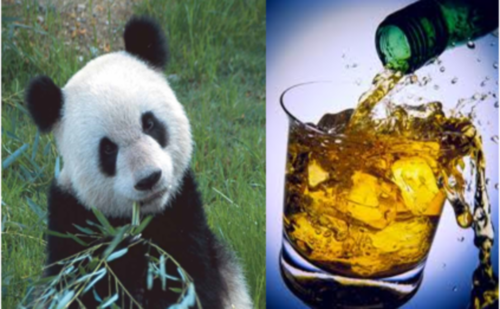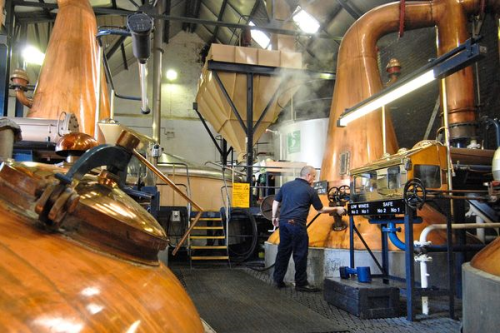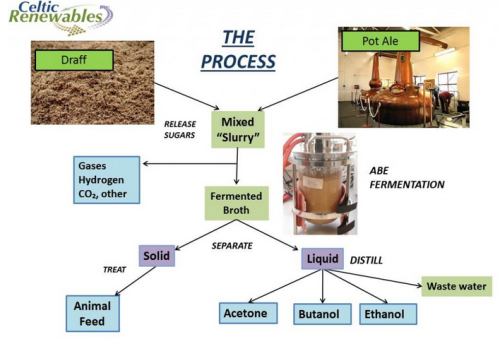Even though the first automobiles were designed to function on biofuels rather than fossil fuels, drilling commercial oil wells became popular in the mid-1800s and biofuel took a backseat. Renewed interest in biofuels was sparked in the 1970s due to some fossil oil crises and ever since, researchers have been developing some pretty creative renewable-energy sources.

Researchers have found ways to use panda poo and whiskey as an energy source.
Running on whiskey
We know drinking and driving is against the law, but using your drink to power your car may be the new alternative to traditional fossil fuels. Scotland-based energy company Celtic Renewables discovered that it could transform Scotland’s profitable whiskey-making industry into an equally profitable renewable energy source.

Inside of the Scotland distillary, Tullibardine. (Image via Tullibardine)
How?
When making whiskey, only 10% of what comes out of the still is actually going to be bottled as whiskey. What remains is residue from the barley grains, which the company found can be repurposed as an energy source called biobutanol.
According to Celtic Renewables, biobutanol offers 25% more energy by volume than ethanol and is easier to store and handle. It can even be burned into an internal-combustion engine in place of gasoline. While other energy sources cannot be mixed into gasoline without undergoing changes, biobutanol can and can even blend with diesel and biodiesel fuels.

Turning whiskey into fuel. (Image via Celtic Renewables)
Panda poo works, too
Pandas eat between 20 to 40 lbs of bamboo every day. As a result, they end up excreting a lot of waste. Mississippi State University discovered that this fecal matter contains microbes that may actually be a solution to the search for sustainable energy.
In the two years studying pandas at the Memphis Zoo, researchers found that there are 40 microbes that live in their stomachs. These microbes could potentially expose a process that would produce biofuels inexpensively and result in less fossil fuel use.
What does a panda have that your other zoo animals don’t? Pandas have the ability to quickly break down plant byproducts (bamboo bark, in this case).
Pandas also have short digestive tracts and do not have any extra stomachs like your typical herbivores. According to Ashli Brown, lead researcher of the study, the microbes can transform the abundant raw material found in plants, lignocellulose, into simple sugars that can be fermented into bioethanol, put into yeasts, and then mass-produced for biofuel.
Since one of the most expensive aspects of making biofuel is the pretreatment, where sugar polymers are chemically treated to make ethanol or oil, if a microbe can do this naturally and efficiently, production costs for alternative fuels would decrease.

So keep an eye out, you never know what your car will be running on one day.
Story via National Geographic.
Advertisement
Learn more about Electronic Products Magazine





